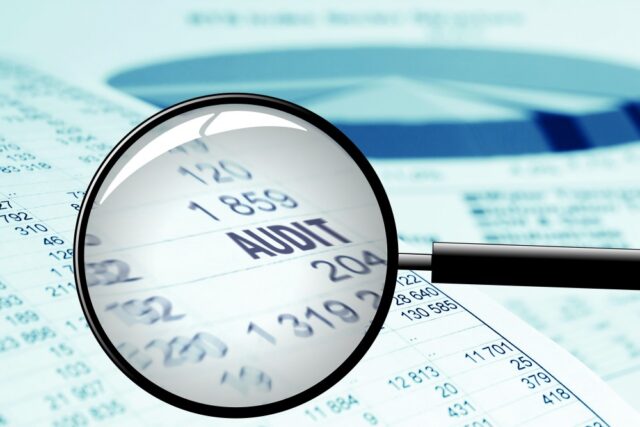
Every company and individual owner indulges in an asset audit annually. But what is an asset audit? Why is it so important? What happens if an organization doesn’t practice? There are many crucial things to find out.
An asset audit is essential for people and organizations to get insight into their tangible and intangible assets! It thoroughly evaluates and looks at all the asset records keenly to provide accurate financial reporting. Equipment appraisers are experts that play a crucial part in this process. They have the skills to evaluate the worth and condition of diverse equipment and machinery.
But how is the asset audit helpful to the organizations? They can plan for maintenance and replacements, optimize asset use, and comply with regulatory obligations by completing a well-structured asset audit. If you are also looking to gain insight into asset audit – this comprehensive guide will help you learn the necessary processes and best practices to conduct an efficient asset audit. Additionally, it will ensure that you maximize the potential of your assets and direct your efforts in the right direction.
Asset Audit – Definition
An accurate inspection of a company or person’s material and intangible assets is known as an asset audit. These items can be actual things like machinery, equipment, buildings, and inventories. Also, intangible things like intellectual property rights, patents, trademarks, and copyrights are included. An asset audit’s main goal is to gain a complete understanding of an organization’s or person’s assets, their worth, and their condition. For instance, a person’s net worth is calculated with the help of an asset audit only.
Importance Of Asset Audit

As stated above, an asset audit is necessary to determine one’s net worth. Additionally, it helps with the taxing as well. Not just this, asset audits hold immense significance. Let’s find out a few reasons why it is essential:
1. Better Asset Management
Imagine having 20-30 assets. Wouldn’t it be tedious to keep track of and manage each one? In this case, audits, including the concept of single entities audit, play an important role! It is easier to manage assets if you know where your assets are located and how they are doing individually. In short, such audits prevent asset under- or overuse, maximizing longevity, and lowering maintenance expenses while providing a comprehensive understanding of each asset’s performance.
2. Financial Reporting
When you know thoroughly about your financial status, it becomes easy to manage taxes and pay them. It is because a thorough asset audit increases transparency and confidence for stakeholders. Additionally, if your company is a share distributor – the audit gives confidence for people to invest.
3. Compliance And Risk Mitigation
Managing many assets at a time is a task! It also involves a lot of risk. For instance, if you forget to pay tax for some reason, you must handle the penalty too! Therefore, organizations must appropriately account for their assets to maintain regulatory compliance. An asset audit makes a better risk mitigation strategy possible perfect miracle, which helps detect asset theft, damage, or loss hazards.
4. Making Decisions More Efficient
Having a clear understanding of the condition of the asset you hold helps make a well-informed decision. For example, investing becomes easier when you know the condition of your company better. This indirectly will help make strategies regarding growth, divestiture, or mergers.
5. Insurance And Tax Purposes
In addition to emphasizing tax implications, the significance of audits extends to insurance considerations. While taxation remains a central focus, it’s essential to recognize that insurance also holds a pivotal role. Assets bear not only tax responsibilities but also require comprehensive insurance coverage. Through audits, a thorough assessment guarantees holistic protection. The process assures that every facet is accounted for, reinforcing coverage from all angles. By undergoing audits, a safeguarded approach emerges, encompassing both tax and insurance realms, thereby ensuring complete coverage and mitigating potential risks for assets.
Preparing For The Asset Audit

Asset audit is a lengthy procedure. It is better to hire a professional for accurate and time-saving audits. Before diving into the asset audit process, preparing adequately to ensure its efficiency and accuracy is essential. Here’s what you will have to do:
1. Determine The Audit’s Goals
Choosing a goal at the beginning of any work gives direction and motivation to achieve it. The same rule applies to asset audits. Therefore, determine the audit’s objectives and parameters. For instance, start by selecting whether you want to audit all assets or just a few particular types or areas. Slice down to larger goals once the smaller ones are finished.
2. Gather The Audit Team
As mentioned above, having an expert makes the process straightforward. Additionally, there is barely anything that you will have to do. So, create a capable audit team of people with experience in asset management, finance, operations, and related fields. With this, your audit will be smoother!
3. Gathering Evidence
Professionals will do their auditing job only if you help them with relevant documents. So, gather any existing asset-related documentation, including purchase and maintenance logs, depreciation schedules, insurance policies, and depreciation schedules. Hand all these to the audit person to ensure your auditing is accurate.
4. Establish A Register Of Assets
You cannot gather evidence and documents of your business or assets yearly. Hence, creating an inventory list or asset register as the audit’s starting point is better. Throughout the auditing process, updates to this register will be made. Also, your annual work is reduced!
5. Distribute Resources
Hiring an expert is not enough! Also, assuming that the audit will happen in a day is incorrect. Therefore, you should set aside enough time, personnel, and technological resources to complete the audit. Additionally, provide the professionals with resources to guarantee a smooth and correct process.
6. Let Stakeholders Know
The process of audit involves massive documentation and work. Therefore, you must guarantee collaboration and minimal disturbance by informing all pertinent parties in advance so that no one interferes in the process.
Analyzing The Audit Results

After the asset audit is done, it is time to study the findings to gather helpful information and make informed decisions.
1. Finding Inconsistencies
Human error is widespread! Therefore, to find mistakes or anomalies, such as missing assets or inaccurate data, compare the audit results with the current records. This will give you an idea of whether your audit is correct or incorrect.
2. Asset Utilization
Examine asset utilization to see if any assets are used inefficiently or if there is room for resource sharing amongst departments. Perfect utilization of assets is necessary for the company to work efficiently. Additionally, it aids in taxation.
3. Planning For Maintenance And Replacement
Every company goes through wear and tear in several ways. Thus, when analyzing, you must plan maintenance schedules and allocate funds for prospective future replacements using the asset condition assessment.
4. Accounting And Reporting
Keep revising financial statements to reflect current asset values and adhere to accounting requirements. It will be a great help during the insurance procedure as well.
5. Risk Mitigation
When you have the result in hand, you must take necessary measures to reduce recognized risks of asset theft, loss, or damage. After all, that is very essential to keep the assets safe!
Implementing Actionable Recommendations

The asset audit’s findings need to result in practical suggestions for enhancing asset management and organizational effectiveness.
1. Update Asset Register
Implement a mechanism for future routine updates to the asset register, updating it with all the accurate information discovered during the audit. As mentioned, it will help every year and save time in gathering documents and papers.
2. Maintenance And Repair
To ensure assets stay in top operational condition, schedule maintenance and repair work based on the asset condition assessment. Prior planning saves time, money and also keeps the asset in proper condition.
3. Asset Disposal
To free up resources, identify no longer needed assets and create a plan for their sale or disposal. Sale or disposal will give you some relief with taxes, insurance, maintenance and many more.
4. Risk Management
Utilize risk mitigation techniques to safeguard assets from possible dangers, including theft, damage, or obsolescence.
5. Compliance And Documentation
Ensure all the paperwork required to comply with laws and internal rules is in place. Loss of any document can lead to massive misuse.
Conclusion

Conducting an asset audit is a proactive method for managing assets effectively and reaching wise conclusions. You may successfully conduct an asset audit by following the instructions in this complete guide, opening the door for enhanced asset management and long-term success.
Remember that an asset audit is a continuous process that should be periodically reviewed and updated to adjust to changing conditions and preserve correct asset records. You can easily navigate the complicated world of asset management and ensure a safe and profitable future for your business or personal activities by having accurate asset information at your disposal.









